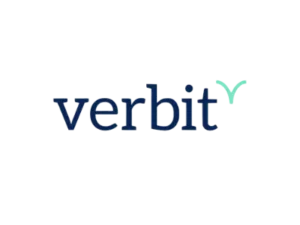DATA ANNOTATION SERVICES BY WERKIT: MAKING DATA EASIER
Werkit helps you get the most accurate data possible to make sure your models succeed. Our labeling system ensures correct labels and less time spent fixing mistakes! No matter where you are in the process, Werkit will make sure you succeed.

Collecting and labeling data is a tedious and time-consuming process that can often slow down the development of machine learning and artificial intelligence models.
Not only is data annotation important for the development of accurate models, but it’s also a critical step in ensuring the privacy and security of your data.
Werkit offers fast, accurate, top-quality data annotation services to help you get your models up and running quickly. With over 20 years of experience in the field, we have the expertise you need to get the most out of your data.
WHAT IS DATA ANNOTATION AND WHY DO YOU NEED IT?
Data annotation is the process of labeling data for use in machine learning projects and artificial intelligence applications.
This involves adding labels, tags, or descriptions to data points so that algorithms can identify and interpret them correctly. It’s a crucial step in developing accurate and reliable machine learning models. Without proper annotations, data points can be misinterpreted, which can lead to inaccurate results.
In addition to accuracy, data annotation is also important for data security with privacy. By labeling data points, you can control who has access to them and how they are used. This is especially important when dealing with sensitive data, such as personal health information or financial data.
Outsourcing Data Annotation to Werkit
What makes us the perfect partner for your data annotation needs?
- A team of highly skilled and experienced data annotators: We have a team of highly skilled and experienced data annotation experts who are familiar with a variety of data annotation tasks.
- A robust quality control process: We have a robust quality control process in place to ensure that all data points are accurately labeled.
- Fast turnaround times: We offer fast turnaround times so you can get your models up and running quickly.
- A variety of data annotation services: We offer a variety of services including image annotation, video annotation, and text annotation.
- A one-stop shop for all your data annotation needs: Werkit is a one-stop shop for all your data annotation needs, from data collection and labeling tasks to quality control and data management.
We understand that data annotation is a critical step in the development of your machine learning models, and we are dedicated to providing the best possible service.
DATA TYPES FOR ALL OF YOUR MACHINE LEARNING NEEDS
There are many different types of data that can be used for machine learning and artificial intelligence applications. Some common data annotation types we offer include:
- Images: We offer image annotation services for a variety of data points, including object detection, semantic segmentation, and landmark detection.
- Videos: We offer video annotation services for a variety of data points, including object tracking, event recognition, and activity detection.
- Text: We offer high-quality text annotations for a variety of data points, including named entity recognition, sentiment analysis, and topic classification.
- Audio: We offer audio annotation services for a variety of data points, including speech recognition and speaker identification.
If you have any other data annotation needs that are not listed here, please contact us and we will be happy to discuss them with you.

What are the steps involved in the annotation process?
A data annotation service works by providing an annotation platform for labeling data. This can be done manually or automatically, depending on the needs of annotation projects.
The first step is to collect the data that will be labeled. This can be done through data scraping, data mining, or manual entry. Once the data is collected, it must be cleaned and organized so that it can be labeled correctly.
The next step is to label the data. This can be done manually or automatically, depending on the needs of the project. If data is being labeled manually, it must be reviewed by a human annotator. This ensures that the data is properly labeled and free of errors.
Once the data is labeled, it can be used for machine learning model training. This process can be repeated as needed to improve the levels of accuracy of the models.
THE BENEFITS OF WORKING WITH A DATA ANNOTATION SERVICE PROVIDER
- Accuracy: Data annotation service providers can help to improve the average accuracy level of your machine learning models.
- Efficiency: Outsourcing your data annotation needs can save you time and money by providing a platform for labeling data quickly and accurately.
- Quality: Data annotation services are using high-quality annotation tools to ensure data is free of errors.
- Privacy: Data annotation service providers can help protect the privacy of your data by controlling who has access to it and how it is used.
If you’re interested in outsourcing your data annotation to our annotation team, please contact us today. We’ll be happy to discuss your specific needs and provide a proposal.
Frequently Asked Questions
Data annotation is used to label data sets so that they can be used in machine learning algorithms in order for the algorithm to learn from the data and improve its performance. It’s a time-consuming and expensive process, but it is essential for building accurate machine learning models.
Semantic segmentation (or semantic annotation) is a data annotation technique used by annotation companies to label data sets for computer vision applications. It involves assigning labels to each pixel in an image, which enables the algorithm to distinguish between different objects in the scene.
AI training data is data that is used to train machine learning models. It can be annotated data sets, or unannotated data sets that have been labeled by humans. Annotated data sets are more expensive to create, but they provide more accurate results for the algorithm.
Image annotation is the process of labeling data sets for computer vision applications. This involves assigning labels to each pixel in an image, which enables the algorithm to distinguish between different objects in the scene.
Text annotations are data labels that are assigned to text data sets. This enables the algorithm to understand the meaning of the text and improve its performance.
Text classification is the process of assigning data labels to text data sets. This enables the algorithm to understand the meaning of the text and improve its performance.
Audio annotation is the process of labeling data sets for audio applications. This involves assigning labels to each sound in an audio file, which enables the algorithm to understand the meaning of the audio transcription and improve its performance.
Automated data annotation is the process of labeling data sets using machines. This is faster and more efficient than manual data annotation, but it can be less accurate.
Data annotation can be used for a variety of applications, including computer vision, natural language processing, and audio applications. It is essential for building accurate machine learning models.
There are a few different ways to ensure that your data is properly annotated. You can use data annotation services, which will label your data sets for you. Or, you can label your data yourself using data annotation software. Finally, you can use automated data annotation, which will label your data sets using machines.
There is a trend toward using data annotation for more applications beyond computer vision, such as natural language processing and audio applications. There is also a trend toward using automated data annotation, which is faster and more efficient than manual data annotation. And finally, there is a trend toward using data annotation services, which will label your data sets for you.
Some of the key benefits of using data annotation for natural language processing include:
- Accuracy improvement in understanding text data sets
- Increased efficiency in text data labeling
- Ability to label a larger number of data sets in a shorter amount of time.
There are three categories of errors and issues:
- Occasional errors (data sets that have been labeled incorrectly)
- Systematic errors (data sets that have been consistently labeled incorrectly)
- Interpretation issues (data sets where the label is correct, but the meaning is unclear).
Trusted by Verbit
Verbit has trusted our experts for audio transcription, text annotation and text validation.

verbit
Werkit and breathe
Werkit is helping companies be leaner, faster and more accurate.
Leave us your details so we can explain how to start delegating your tasks.
